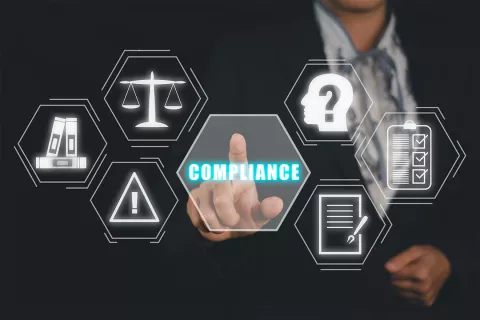
The European Union Medical Device Regulation (EU MDR) 2017/745 is a regulation that sets out the requirements for medical devices in the EU. The regulation provides the evaluation of medical devices prior to marketing, and one of the key requirements is the need for clinical investigations. Clinical investigations are necessary to assess a device’s safety and performance and demonstrate that it meets the requirements of the EU MDR. Under the EU MDR, the clinical investigation has been divided into three (03) components –
- Article 62 describes the general requirements for clinical investigations conducted to demonstrate the conformity of medical devices.
- Article 74 describes the requirements for clinical investigations regarding medical devices that bear the CE marking. This is considered a part of the post-market surveillance activities.
- Article 82 describes requirements for investigations of devices that are not clinical investigations as defined in Article 2 of the Regulation. These investigations are required to ensure the safety and performance of a device and must be conducted in accordance with good clinical practice and include a protocol, informed consent, and data management and analysis.
Clinical investigations should be in line with well-established international guidance in this field, such as the international standard ISO 14155:2011. In this article, we will briefly look into the pre-market clinical investigation that is described under Article 62. But first, let’s take a look at the roles of various key stakeholders involved in the clinical investigation –
Sponsor
Here the sponsors are considered the ones who initiate the clinical investigation and are not necessarily a manufacturer or European Authorised Representative (EAR). As per Article 2, a sponsor is defined as, “any individual, company, institution or organization which takes the responsibility for the initiation of the management and setting up the financing of the clinical investigation.”
Subject
The subject is an individual who will be participating in the clinical study.
European Authorised Representative (EAR)
An EAR is any natural or legal person who is established within the European Union and has received and accepted a written mandate from a foreign manufacturer (not located in the EU geography). An EAR will be liaising with the Member State for communication and is responsible for making sure that the clinical investigations are in compliance. However, the Member State could provide an exemption to this if the study conducted is limited to the territory of that Member State.
Ethics Committee
The Ethics Committee is an independent entity established in a Member State that is responsible for evaluating the investigations and ensuring that the sponsor is adhering to the ethical principles and safety standards set out in the regulation.
As mentioned earlier, the devices which have not yet been CE-marked, need to comply with the EU MDR framework and are required to follow the pathway mentioned under Article 62. Pre-market clinical investigations are a crucial part of the process of bringing a new medical device to the market and are necessary for ensuring the safety and efficacy of the device. It is important for clinical investigators to have a thorough understanding of the Regulatory requirements and to ensure that the trial is conducted in accordance with these requirements.
The pre-market clinical investigations are required to abide by Articles 62 to 80 and Annex XV. Article 62 specifically points out the requirements that are required by the manufacturers to carry out a clinical investigation and is applicable to both the pre-market and post-market investigation. Further, Article 63 to 66 specifically highlights the informed consent and clinical investigations carried out on incapacitated subjects, minors, and pregnant/breastfeeding women.
Pathway for the Clinical Investigation –
Drawing out a Clinical Investigation Plan (CIP)
The very first step to initiate the clinical investigation is to draw out a Clinical Investigation Plan (CIP) as described in Annex XV, which is a document that describes the objectives, methodology, statistical considerations, and organization of a clinical investigation to demonstrate the safety and performance of a medical device.
Submitting the documents to the Member State/s
Further, the sponsor is required to submit an application via EUDAMED to the Member State/s along with the documents referred to in Annex XV. For any changes, the sponsor is required to update and notify the Member State/s within a week. Upon submitting it on the EUDAMED, the sponsor will receive a unique ID for that clinical investigation which will then be used for future communications.
Assessment by Member State/s
Upon receiving the application, Member State/s are required to give confirmation with respect to the scope of the clinical investigation within ten (10) days. During this period, the Member State/s can also ask for additional information. The Member State/s are required to ensure that the assessment of the submitted application is done in a collaborative manner with the appropriate number of members and qualified experience. They are required to assess that the clinical investigation is designed in a way that the potential risks (after minimizing the risks) on the subjects justify the clinical benefits.
Initiation of Clinical Investigation
After the approval, the clinical investigation is initiated, and the sponsor/investigator is required to ensure that the investigation is being carried out in accordance with the CIP provided. They are also required to make sure that adequate monitoring is being done while carrying out the clinical investigation.
Recording of Clinical Evidence
All the information deduced during the clinical study is to be recorded, processed, and maintained by the sponsor/investigator, and at the same time, they are required to make sure that appropriate measures are being taken care of with respect to the subject’s prevailed information. The sponsor is also required to create a plan for emergencies that allows for the rapid identification and, if necessary, the rapid recall of the devices used in the study. This clinical data is further used as a part of the Clinical Evaluation Report (CER), which further will be forwarded to the Notified Body (NB) for conformity assessment.
If the sponsor has temporarily halted a clinical investigation or terminated a clinical investigation early or at the end of the clinical investigation, the sponsor shall inform the same to Member State within 15 days.
Thus, clinical investigations are a critical part of getting device approvals in the EU market, and the MDR has set out very detailed requirements for the same. Given the complexity and stringency of these requirements, it can become difficult for manufacturers to correctly understand, interpret, and document them. No doubt, there have been various templates and guidelines released by the Medical Device Coordination Group Document (MDCG), MEDDEV guidance like MEDDEV 2.7/4, MEDDEV 2.7/2 Rev 2, MEDDEV 2.7/3 Rev. 3, etc. One way to tackle this challenge is to outsource it.
At Freyr, we have been assisting several companies with our robust model to tackle such challenges. To know more about clinical investigations under EU MDR, contact Freyr today! Stay informed. Stay compliant.









